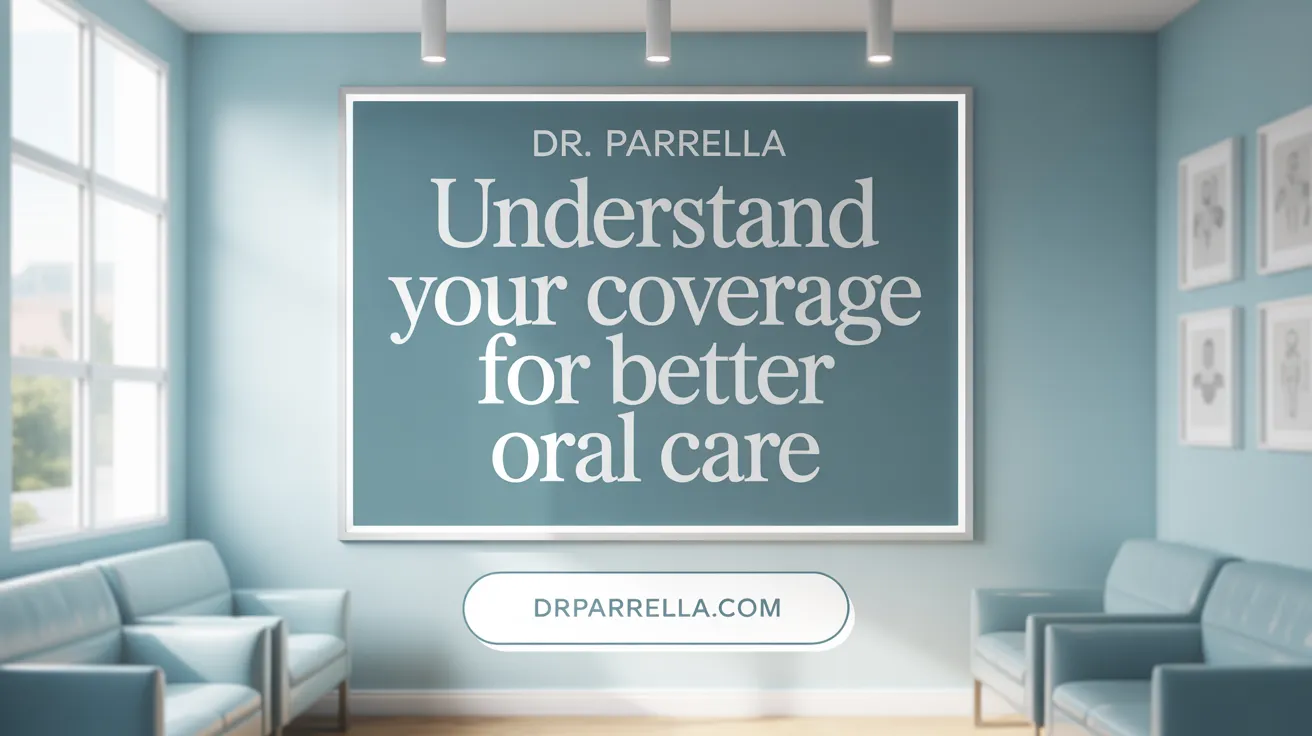Understanding Your Dental Insurance Benefits
Dental insurance is a valuable tool that can significantly reduce your out-of-pocket expenses and promote good oral health. However, many policyholders do not fully utilize their benefits, often losing money when unused coverage expires annually. To get the most from your dental insurance, it’s crucial to understand how dental plans work, the types of coverage they provide, and strategies to maximize your benefits effectively throughout the year.
Know Your Coverage: Preventive, Basic, and Major Services

What types of dental services do insurance plans typically cover and at what rates?
Most dental insurance plans categorize coverage into three main groups: preventive, basic, and major services. Preventive care is almost always covered at 100%, which includes routine exams, cleanings, X-rays, fluoride treatments, and often sealants for children. Basic treatments—such as fillings, root canals, gum disease care, and extractions—usually have coverage ranging from about 70% to 80%, reducing your out-of-pocket costs significantly. Major procedures like crowns, bridges, dentures, dental implants, and oral surgeries are generally covered at about 50%. It's worth noting that cosmetic treatments like teeth whitening or some orthodontic work (braces, Invisalign) are frequently excluded or receive limited coverage under most plans. For more details, see Dental coverage tips and Dental insurance coverage categories.
Are there waiting periods for some dental treatments?
Yes, many dental insurance plans require waiting periods of up to six months for treatments beyond preventive care, like crowns or root canals. These waiting periods mean coverage for such services may not begin immediately after enrollment. Reading your plan’s detailed policy is crucial to understand which services have waiting periods and how they might impact your treatment timeline and costs. Learn more about Dental insurance waiting periods and Waiting periods in dental insurance.
Commonly covered services and important exclusions
In addition to preventive, basic, and major procedures, many plans exclude or limit coverage for cosmetic dentistry, experimental treatments, or procedures not performed under a dentist's supervision. Orthodontic coverage varies widely—some plans include it, while others do not. Always verify what your plan specifically includes. For information about Commonly covered dental procedures and Orthodontic coverage in dental plans.
Why reading plan details matters
Dental insurance plans can differ greatly in their coverage terms, maximum yearly benefits, deductibles, and network restrictions. Understanding your plan’s scope, limitations, and waiting periods helps you plan treatments effectively to maximize benefits and minimize unexpected expenses. For more on Maximizing dental insurance benefits and Choosing in-network dentists.
By knowing the specifics of your insurance coverage for preventive, basic, and major dental services, you can make informed and strategic decisions about your oral health care throughout the year. Additional helpful tips are available at Guide to optimizing your dental insurance benefits.
Maximize Annual Benefits and Understand Your Financial Responsibilities

What is the annual maximum in dental insurance and how does it affect coverage?
The annual maximum in dental insurance is the total dollar amount your plan will cover for dental services within a 12-month period, typically ranging from $1,000 to $2,000. This limit resets every year, often on January 1st. It's important to know that any unused benefits at the year's end do not carry over, meaning if you don't use your full benefit within the year, the remaining amount expires. For more details, see What is an annual maximum in dental insurance?.
How can timing dental treatments affect the maximization of insurance benefits?
Proper timing of dental treatments can significantly increase your insurance benefits. By scheduling procedures close to the start or end of your benefit year, you can effectively use two annual maximums. For example, beginning a multi-step treatment like a root canal in December and completing it in January allows coverage from two benefit periods.
Spreading out treatments over two different years also helps reduce out-of-pocket costs by limiting deductible payments, since deductibles usually apply once per coverage year. Grouping multiple treatments within the same year ensures you pay only one deductible and maximize your plan's payout. Learn more about planning dental treatments around annual maximums at Navigating dental insurance: a patient's guide to maximizing benefits.
Understanding deductibles and coinsurance
Besides annual maximums, dental plans often require deductibles—fixed amounts paid out-of-pocket before insurance kicks in—and coinsurance, a percentage of treatment costs shared between you and your insurer. Knowing these costs upfront helps with financial planning and avoids unexpected expenses. For a deeper explanation, visit Dental insurance deductibles explained.
Impact of unused benefits not carrying over
Unused dental insurance benefits do not roll over to the next year and are lost if you don't use them by the benefit period's end. This "use it or lose it" policy underscores the importance of scheduling dental check-ups and treatments annually to make the most of your coverage and maintain oral health. See Use it or lose it: maximize your dental insurance benefits before year-end for tips on optimizing your benefits.
Choosing In-Network Providers and Understanding Network Types

Why is Selecting an In-Network Dentist Important?
Choosing an in-network dentist is crucial because these providers have agreed to negotiated lower fees with your dental insurance company. This arrangement can significantly reduce out-of-pocket costs, making dental care more affordable. Additionally, using in-network dentists usually simplifies the claims process, helping prevent unexpected bills. However, one should be aware that opting for in-network providers may sometimes mean shorter appointment times or limited appointment availability.
What Are the Differences Between Common Dental Plan Types?
Dental insurance typically comes in several plan types, each with distinct features:
- PPO (Preferred Provider Organization): Offers a large network of dentists and allows patients to visit out-of-network dentists, though at higher costs. This plan offers flexibility and wider provider choices.
- DHMO (Dental Health Maintenance Organization): Features lower premiums and no deductibles but restricts coverage strictly to in-network providers. Referrals may be required for specialist care, and networks tend to be smaller.
- Indemnity Plans: Reimburse a percentage of dental expenses regardless of dentist choice, offering maximum billing flexibility. However, premiums tend to be higher, and out-of-pocket costs can be less predictable.
For a detailed explanation of these types of dental insurance plans, see the linked resource.
Cost Implications of Out-of-Network Care
Visiting an out-of-network dentist often means paying higher fees because the insurance company has not negotiated discounted prices for those providers. This leads to increased out-of-pocket expenses, delayed claim processing, and potential balance billing where patients pay the difference between provider charges and insurance reimbursement. Understanding the impact of premium costs on dental coverage and in-network vs out-of-network dental coverage can help you make informed decisions.
Provider Networks and Appointment Considerations
Larger networks like those in PPO plans offer more dentist options, potentially making it easier to find convenient appointment times. DHMO plans can have fewer dentists, which might affect appointment availability and length. It's wise to confirm your dentist's network status with your insurance plan before scheduling to maximize both benefits and convenience. For tips on choosing in-network dentists and understanding routine dental cleanings coverage, consult these resources.
Leveraging Health Savings Accounts and Coordination of Benefits

How can Health Savings Accounts (HSAs) help with dental costs?
Health Savings Accounts, or HSAs, offer valuable tax advantages that can make managing dental expenses easier. Contributions to an HSA are made with pre-tax dollars, reducing taxable income. These funds can then be used to pay for qualified dental costs, such as cleanings, fillings, crowns, and even orthodontics, helping to lower out-of-pocket spending. For more information, see using HSAs for dental expenses.
However, using HSAs requires some planning and paperwork. There are rules regarding how and when the funds can be used, and any unused money may be subject to restrictions or expiration, depending on the specific HSA provider and account management. Further details can be found in dental insurance deductibles and using HSAs.
Does having two dental insurance plans double your coverage?
It's a common misconception that having two dental insurance plans automatically doubles your coverage. In reality, dental insurance uses a system called Coordination of Benefits (COB) to prevent overpayment. The primary insurance plan, usually from your main employer, pays first. The secondary plan may cover some remaining out-of-pocket costs but rarely covers 100% of total expenses. Learn more about coordination of dual dental insurance plans and ADA guidance on coordination of benefits.
COB can be complicated, involving specific rules that determine payment order and limits. Because of this, the combined payouts from both plans typically do not exceed the total cost of your dental care, meaning dual coverage provides benefits but doesn't double them.
By understanding how HSAs can reduce tax burdens on dental spending and how coordination of benefits works when multiple insurance plans are involved, patients can better navigate their dental insurance options and plan their care efficiently.
Proactive Strategies to Utilize Your Benefits Fully

How can regular preventive care maximize dental insurance benefits?
Primarily, most dental insurance plans cover preventive care at 100%, including twice-yearly exams, cleanings, X-rays, fluoride treatments, and coverage for dental sealants. Regular visits keep oral health in check by preventing complex dental issues that could require costly treatments. Since preventive services usually don't involve deductibles or copays, scheduling these checkups maximizes your insurance benefits with minimal out-of-pocket expense.
Why are pre-treatment estimates and dentist consultations important?
Before undergoing treatments, getting a pre-treatment cost estimate helps clarify what your insurance will cover and your expected share of the expenses. Consulting your dentist ensures you develop a treatment plan that fits your insurance coverage, optimizes benefit usage, and allows you to time larger procedures strategically—especially before annual benefits reset.
What are common mistakes that can reduce the value of dental insurance?
Several pitfalls reduce benefits' effectiveness. These include missing deadlines or waiting periods, neglecting regular preventive visits, assuming having dual insurance coverage doubles coverage, choosing out-of-network providers unaware of higher costs, and skipping pre-authorization for significant treatments. Avoiding these errors protects your coverage benefits and limits unexpected out-of-pocket spending.
By staying proactive—scheduling timely preventive visits, addressing minor dental issues early, seeking clear cost estimates, and avoiding coverage missteps—you can maximize the value of your dental insurance throughout the year.
Making the Most of Your Dental Insurance Coverage
Maximizing your dental insurance benefits requires a clear understanding of your plan’s coverage details, including annual maximums, deductibles, and network restrictions. Regular preventive care is essential not only for your oral health but also to ensure you make full use of fully covered services. Planning treatments strategically, especially larger procedures, alongside timely use of benefits before they reset, can save significant out-of-pocket costs. Leveraging tools like Health Savings Accounts and coordinating with your dentist and insurance providers will further optimize your dental care investment. By proactively managing your dental insurance, you not only protect your smile but also enhance your overall health and financial well-being.
